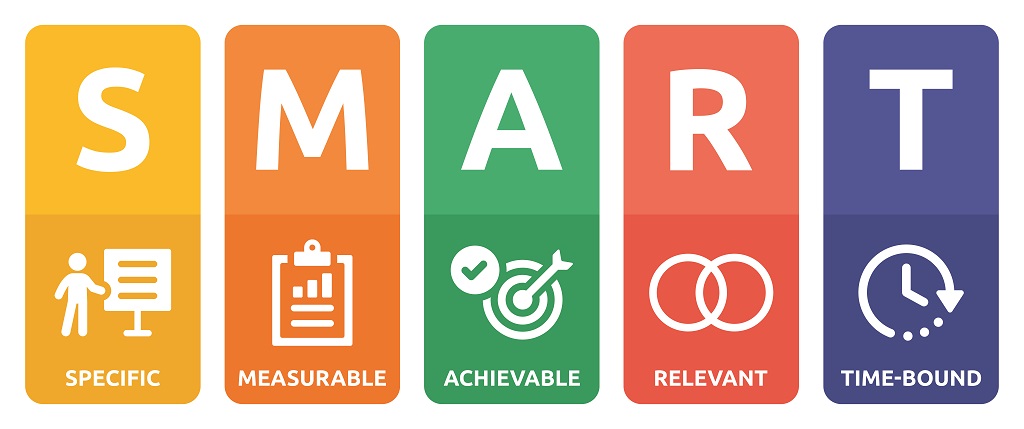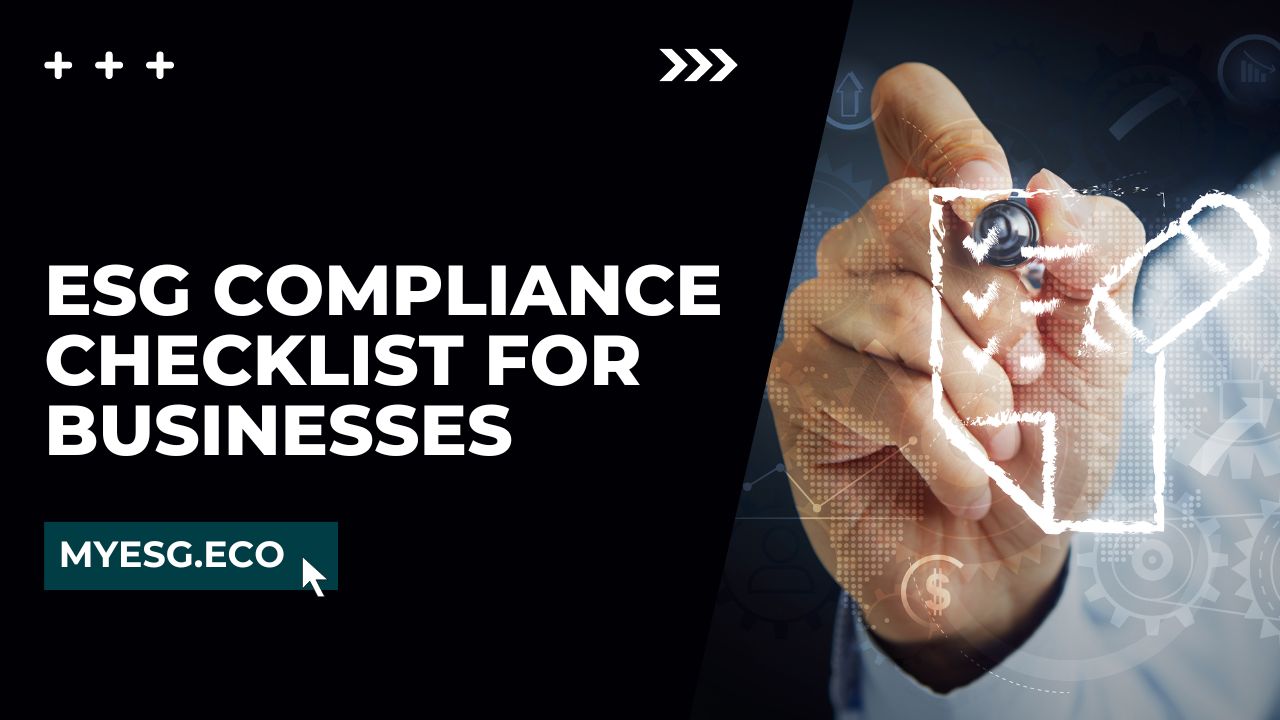Looking to improve your business’s sustainability and social responsibility? You’re not alone. With stakeholders demanding more transparency and accountability, ESG compliance is essential.
Use our comprehensive ESG compliance checklist to assess your environmental, social, and governance practices and implement the changes needed to succeed in today’s socially conscious business world.
Table of Contents
- 1. Environmental Compliance
- Identifying and Assessing Environmental Impacts and Risks
- Establishing Targets and Objectives
- Monitoring and Measuring Environmental Performance
- Reporting on Environmental Performance and Risks
- Implementing Programs and Initiatives to Reduce Environmental Footprint
- Compliance with Relevant Environmental Laws and Regulations:
- Engaging with Stakeholders on Environmental Issues and Risks
- 2. Social Compliance
- Identifying and Assessing Social Impacts and Risks
- Establishing Targets and Objectives
- Monitoring and Measuring Social Performance
- Reporting on Social Performance and Risks
- Implementing Programs and Initiatives to Improve Social Performance
- Compliance with Relevant Social Laws and Regulations
- Engaging with Stakeholders on Social Issues and Risks
- 3. Governance Compliance
- Establishing a Governance Structure that is Accountable and Transparent
- Developing a Clear Code of Conduct
- Implementing Policies and Procedures to Prevent Unethical Behavior and Corruption
- Reporting on Governance Performance and Risks
- Ensuring a Diverse and Independent Board of Directors
- Compliance with Relevant Governance Laws and Regulations
- Engaging with Stakeholders on Governance Issues and Risks
- Conclusion
1. Environmental Compliance

Before you can effectively manage your company’s environmental footprint, you need to understand where your impacts and risks lie.
Conducting an environmental impact assessment can help you identify the key areas where your operations may have an impact, such as energy use, water consumption, and waste generation.
You should also consider potential risks, such as environmental accidents or noncompliance with regulations.
Once you’ve identified your environmental impacts and risks, it’s important to establish targets and objectives to guide your efforts to reduce your environmental footprint.
These targets should be specific, measurable, achievable, relevant, and time-bound (SMART) and should be aligned with your company’s overall sustainability goals.
To track your progress toward your environmental targets and objectives, you need to establish a system for monitoring and measuring your environmental performance.
This may involve collecting data on energy use, water consumption, waste generation, and other environmental metrics and analyzing this data to identify areas for improvement.
To demonstrate your company’s commitment to environmental sustainability, you should report on your environmental performance and risks to stakeholders, including customers, investors, and regulatory agencies.
This can include disclosing environmental metrics, goals, and performance against those goals, as well as information about any environmental risks your company may face.
To achieve your environmental targets and objectives, you’ll need to implement programs and initiatives to reduce your environmental footprint.
This may involve investing in renewable energy, improving energy efficiency, reducing water consumption, implementing sustainable sourcing practices, and minimizing waste generation.
To avoid legal and regulatory penalties, it’s essential to stay up to date with relevant environmental laws and regulations and ensure that your company is following these requirements.
This may include obtaining permits, monitoring and reporting environmental emissions, and implementing pollution control measures.
To build trust and credibility with stakeholders, it’s important to engage with them on environmental issues and risks.
This may involve working with suppliers to improve their sustainability practices, collaborating with other organizations on sustainability initiatives, and participating in industry forums and stakeholder dialogues to share best practices and address shared environmental challenges.
2. Social Compliance

Just as with environmental compliance, it’s important to identify and assess the social impacts and risks associated with your business operations.
This may involve evaluating potential human rights violations in your supply chain, assessing labor standards and worker well-being, and considering the impacts of your operations on local communities.
To improve your company’s social performance, you’ll need to establish targets and objectives that are specific, measurable, achievable, relevant, and time-bound (SMART).

These targets should be aligned with your overall sustainability goals and may include goals related to diversity and inclusion, employee engagement, community investment, and ethical business practices.
To track progress toward your social targets and objectives, you need to establish a system for monitoring and measuring social performance.
This may involve collecting data on employee diversity and engagement, community investment, and other social metrics and analyzing this data to identify areas for improvement.
To demonstrate your company’s commitment to social responsibility, it’s important to report on your social performance and risks to stakeholders, including customers, investors, and regulatory agencies.
This can include disclosing social metrics, goals, and performance against those goals, as well as information about any social risks your company may face.
To achieve your social targets and objectives, you’ll need to implement programs and initiatives to improve your company’s social performance.
This may involve investing in employee training and development, promoting diversity and inclusion, engaging with local communities, and supporting ethical business practices throughout your supply chain.
To avoid legal and regulatory penalties, it’s important to stay up to date with relevant social laws and regulations and ensure that your company is in compliance with these requirements.
This may include ensuring fair labor practices and human rights protections for workers, promoting equal opportunity and non-discrimination in the workplace, and complying with regulations related to community engagement and investment.
To build trust and credibility with stakeholders, it’s important to engage with them on social issues and risks.
This may involve collaborating with suppliers to improve social and ethical practices, engaging with local communities on sustainability initiatives, and participating in industry forums and stakeholder dialogues to share best practices and address shared social challenges.
3. Governance Compliance

An effective governance structure is critical for ensuring that your company operates in a responsible and ethical manner.
This may involve establishing a clear chain of command, ensuring that decision-making processes are transparent and well-documented, and providing oversight to ensure that policies and procedures are being followed.
A code of conduct is a critical tool for establishing a culture of ethical behavior within your company. This document should outline your company’s values and principles, as well as specific policies and procedures related to issues such as anti-corruption, conflicts of interest, and data privacy.
To prevent unethical behavior and corruption within your company, it’s essential to implement policies and procedures that establish clear expectations for employee behavior and provide guidance on how to identify and report potential violations.
This may include whistleblower policies, anti-bribery policies, and codes of conduct.
To demonstrate your company’s commitment to governance, it’s important to report on your governance performance and risks to stakeholders, including customers, investors, and regulatory agencies.
This can include disclosing governance metrics, such as board diversity and independence, as well as information about any governance risks your company may face.
An effective board of directors is critical for ensuring that your company operates in a responsible and ethical manner.
To promote diversity and independence, it’s important to establish clear criteria for board membership and to seek out candidates from diverse backgrounds and with a range of skills and experiences.
To avoid legal and regulatory penalties, it’s important to stay up to date with relevant government laws and regulations and ensure that your company follows these requirements.
This may include complying with regulations related to board composition, executive compensation, and shareholder rights.
To build trust and credibility with stakeholders, it’s important to engage with them on governance issues and risks.
This may involve establishing regular communication channels with shareholders and other stakeholders, as well as participating in industry forums and stakeholder dialogues to share best practices and address shared governance challenges.
Conclusion
In an age where sustainability and social responsibility are paramount, ESG compliance is a key component for businesses looking to make a positive impact.
From reducing environmental impacts to improving social performance and establishing a transparent governance structure, implementing an ESG compliance program can benefit businesses in countless ways, from attracting investors to building customer loyalty.
By using the comprehensive ESG compliance checklist and engaging with stakeholders, businesses can create a culture of responsibility and sustainability, paving the way for a brighter future for all.

